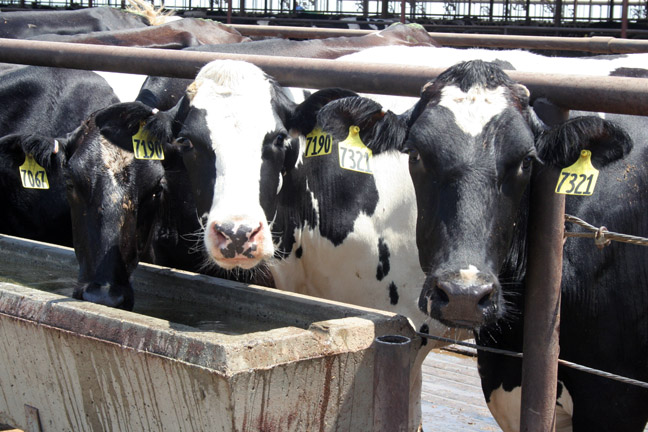California Dairies Don't Waste Water

As the state’s drought raises questions about agriculture’s water use, farm leaders and the dairy industry lay out some facts.
The news about California’s fourth year of drought isn’t getting any better:
- This month, 44% of California is classified under the exceptional drought rating, which means there are exceptional and widespread crop and pasture losses.
- Shortages of water in reservoirs, steams and wells are creating water emergencies.
- This year, 41 percent of the state’s irrigated farmland will lose its entire surface water supply, according to California Farm Water Coalition.
- Millions of Californians are now expected to cut their water usage by at least 25%. Many parks, highway and freeway medians, and other large landscapes may go without watering. In cities like Bakersfield, lawn watering is allowed only three days a week.
Many point at California agriculture, which accounts for 40% of the state’s water (50% goes to environmental causes), and ask, “Why didn’t the governor order cuts on farms?”
California Farm Bureau President Paul Wenger bristles when he hears that. “Of course, water use has been cut on farms and ranches, with many of the state's farmers facing water-supply cuts of 60 percent, 80 percent, even 100 percent, and for a second straight year,” Wenger says.
“Farmers are always the first to be cut back—always—and . . . those cuts go deeper and deeper until the water planners can no longer ignore the need to cut urban uses,” he adds.

Ag defenders like Wenger say farmers devote water not to waste but to growing food. Various crop commodity groups are working to set the record straight about agriculture’s water use in a time of drought and water restrictions.
Among them is Western United Dairymen (WUD), a trade group that represents 60% of the milk grown in California. WUD recently released these facts about water use on California dairies:
- Today, the water footprint of a glass of milk is 65% smaller compared to 70 years ago. That means it takes roughly one-third of the water it did during the Franklin Roosevelt ad-ministration to produce a glass of milk today.
- Dairy farmers have demonstrated their commitment to using water efficiently. As evidenced by their significant water footprint reduction over the last 70 years, dairy farmers are mindful of water conservation and efficiency regardless of whether it’s a “wet,” “normal,” or “dry” year.
- Water recycling is standard practice on today’s dairies. Clean water is used to wash cows, clean the milking parlor and equipment, and cool milk tanks. That water is then reused to flush manure from barn floors and finally recycled and blended with irrigation water to nourish crops used to feed cows, such as alfalfa and corn.
- Innovation continues to improve dairy farmers’ already impressive track record. More farmers are experimenting with drip irrigation to grow feed crops, such as corn and alfalfa. Early trials of this technology have provided promising results. Some farmers have seen a 25% reduction in water use with a 20% to 25% increase in crop yield.
- Water is required to grow food. All foods, whether they’re plant or animal derived, require the precious resource of water to bring them from farm to table. When compared to other foods on a per gallon or per pound basis, the water footprint of milk is actually lower compared to many food products regularly found in the pantries and refrigerators of California consumers. According to National Geographic, which utilized data from the Water Footprint Network, many foods, such as soybeans, apple juice, wine and chocolate, have similar or higher water footprints when compared to milk.







